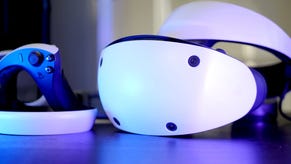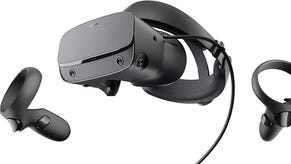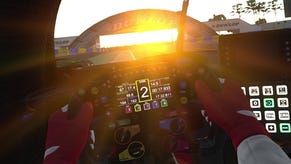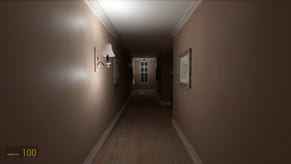Even without Alyx, Half-Life's VR legacy is written in stone
Index referral.
There's a sense Half-Life Alyx will be VR's moment in the sun, the "killer-app" that Halo was to Xbox or that Shenmue should have been for the Dreamcast. Assuming Valve don't fluff it (which, let's face it, is unlikely) Alyx will be the point the industry looks back on as when VR became more than an expensive curiosity.
But it would be a shame if the history books ended up written that way. Not because I have doubts about Alyx, or that another game should be in its place, but because Half-Life's influence on VR gaming is already notable. Half-Life: Alyx isn't so much a first step as something Valve has been building toward for a long time.
I've been interested in VR since the beginning, eagerly picking up an Oculus Rift development kit when they were made commercially available in 2014. Frankly, I was a little too eager. At that time, the available dedicated VR experiences were limited to a handful of free tech-demos (because, you know, they were developer kits). But a few already- developed games offered hacky VR support, and one of those was Half Life 2.
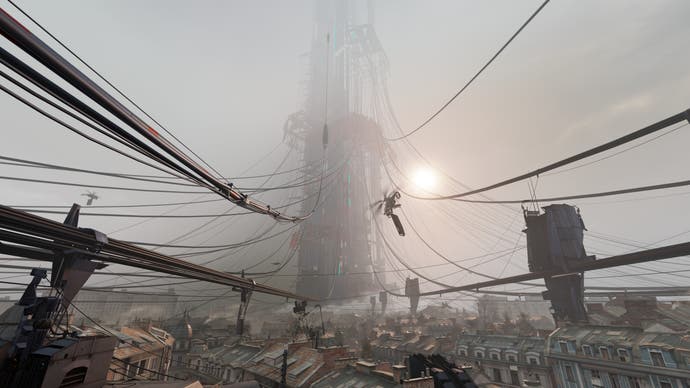
If I sound like I'm talking about 2014 like it was Victorian Times, that's because VR has come a long way in six years. By 2020 standards, playing Half-Life 2 in VR was dreadful, like playing football with one of those old leather and lace affairs where every header risked a concussion. The DK1's resolution was tiny compared to the Valve Index or the Rift S, and bespoke VR controllers didn't exist at all, which means you played sat down with traditional KB + Mouse controls. Also, because Half-Life 2's movement speed was so fast, half-an-hour's play would give you the kind of motion sickness that could floor a Navy Admiral.
At the time, though, it was transcendent. Half-Life 2 was the game that made me fall in love with VR. Being placed inside City 17, having it wrapped around me like a dystopian comfort blanket, was utterly thrilling. VR's ability to provide scale and depth to virtual worlds is a much-discussed phenomenon, but the effect is doubly striking when it's a place you already know. Suddenly, you feel the cavernous space of Half Life 2's train station. You have to look up to watch Doctor Breen waffle on about how safe City 17 is. You walk up to a combine patrol guard and he looms over you, his hand pushing into your chest as he shoves you away.
Half Life 2 obviously wasn't designed with VR in mind, so it can be a bumpy ride. The vehicle sections are almost unplayably nauseating. That said, it's remarkable how well much of it fits the format. Fighting the manhack drones with a crowbar during Route Kanal is transformed in VR, with you ducking and swerving as they fly at your face. And if you thought Ravenholm was spooky before, wait until you've fended off a skeletal headcrab zombie through a VR headset.
When you experience Half-Life 2 in VR, even in a limited capacity, it becomes clear why Valve is so attracted to the hardware. There's something about the way Valve build first-person games that makes them uniquely fit for Virtual Reality. Sadly, Valve's own version of VR Half-Life 2 no longer functions. But it is still possible to play Half-Life 2 in VR thanks to the modding community. It takes a little setting up, requiring a copy of Garry's Mod and its own "Experimental VR" mod (that's right, Garry's Mod has mods), but this mod has greater functionality than the Valve prototype, adding motion controls inspired by Half-Life: Alyx's grabbity gloves. There are limitations - you can only use a couple of weapons, for example. But for an amateur mod, it's impressive.
If you really want a sense of what Half-Life: Alyx might be like, however, you're better off playing Boneworks. Boneworks is a sandbox-shooter developed by Stress Level Zero, and it's so palpably inspired by Half-Life that, when it was first shown off, some people believed that it might be Valve's long-rumoured VR Half-Life game.
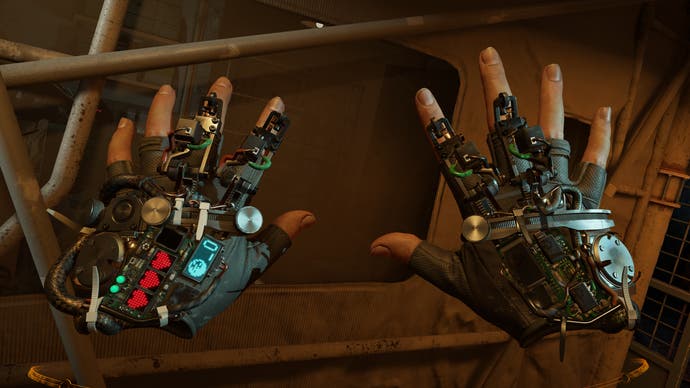
Boneworks aims to do for VR what Half Life 2 did for traditional shooters, namely to ground the entire game in a "realistic" physics simulation. It isn't the first VR experience to incorporate in-game physics, but Boneworks specifically tries to ensure that everything in the game has the appropriate "feel". If you swing a sledgehammer around, it feels heavy and cumbersome. If you fire a gun, it has the appropriate sense of power and recoil. Tactility and texture are key elements too. Breaking a plate glass window has different feel to it than smashing a crate, for example.
But Bonework's relationship with Half-Life 2 is much more intimate than this. The game is essentially a six-hour long ode to Valve's classic FPS. The setting is a dilapidated, soviet-esque city complete with traversable storm drains and even a physics-powered playpark. Many of the enemies are obviously inspired by Freeman's adventures, including a scuttling spider-robot that leaps at your head and tries to attach itself to your face. Crucially though, Stress Level Zero aren't simply borrowing from Half-Life out of laziness or just "because references". Half-Life 2 was designed in part to showcase a new technology, and Stress Level Zero use Half-Life 2 as a template to showcase another one.
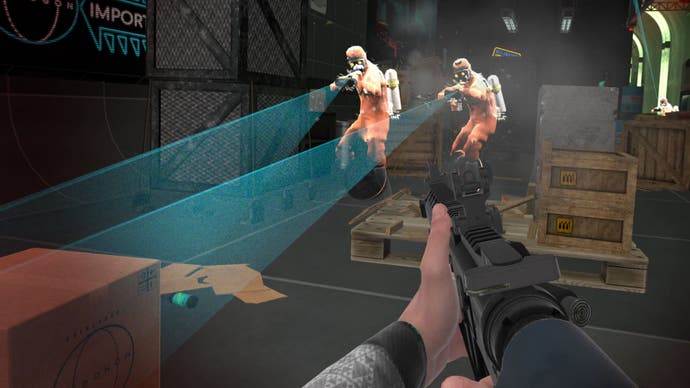
Returning to those spiderbots, fighting them in Boneworks is a very different experience to fighting Half-Life's headcrabs, because now you can physically pull them off your face if they try to latch on, or even grab hold of them mid-flight, snatching them by the leg before bashing them with a wrench or a hammer or, indeed, a crowbar. Stress Level Zero design every aspect of Boneworks in the same way, whether it's the game's physics-based puzzles, pacing out puzzles with gunfights, or giving each chapter a different theme, ensuring new elements and ideas are gradually introduced throughout the campaign.
When it launched late last year, Boneworks almost immediately became one of VR's biggest hits, and is held by many as the standard that other VR games, including Half-Life: Alyx, should aspire to. Between this and giving a glimpse of what VR might become in its earliest days, Half-Life has already cemented its VR legacy



